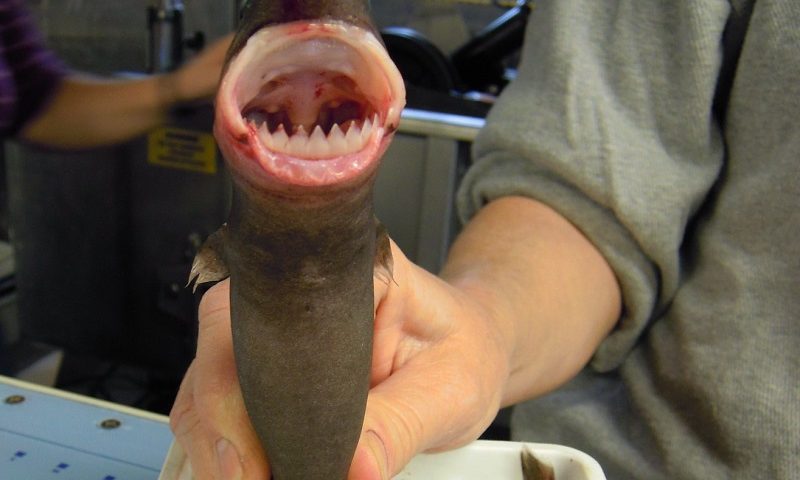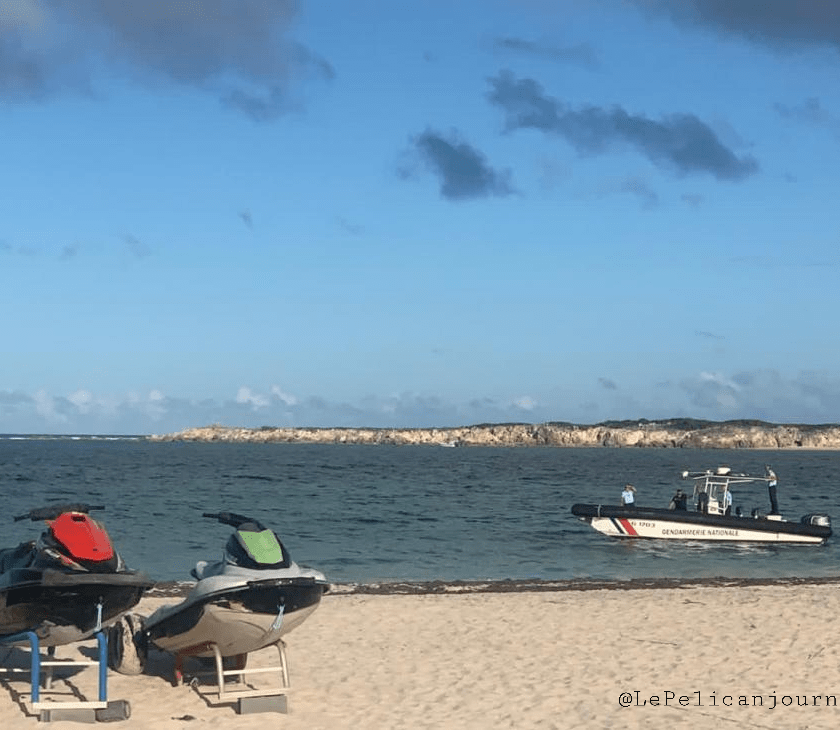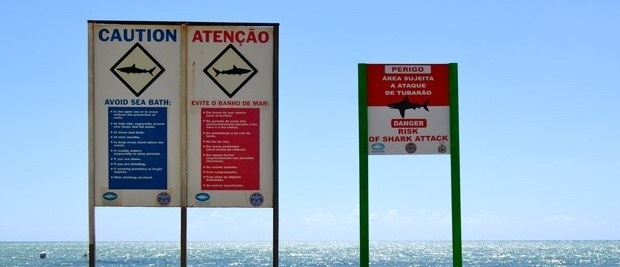The chances of a human being bitten by a cookiecutter shark are extremely rare, yet the third incident for the year has been reported. More unusual, the swimmer was bitten twice.

Adherbal Treidler de Oliveira, 49, a long-distance swimmer, was working to complete the Ocean Seven swim event when he was bitten. The swim consists of crossing seven open water channels including the Molokai Channel, also known as the Kaiwi Channel, in Hawaii.
Oliveira began his swim at 4:23 p.m. with escort pilot Matt Buckman in a support boat and Buckman’s son Manoa in a kayak July 29.
The Brazilian swimmer wore a glow light on his swim cap so Manoa could keep an eye on Oliveira as he swam during the dark night. At 10:20 p.m. Olivera felt something hit his stomach.
“I had been swimming for about 6 hours and 30 kilometers (18 miles) when I felt something hit my belly,” Oliveira told Tracking Sharks. “I realized that I had been attacked by something. That’s when I swam for the kayak.”
The support kayak was equipped with an electronic shark deterrent and the injured swimmer thought it might keep the unknown predator at a distance.
“When I was done reporting the first attack, I was attacked a second time. This time with a bite on the inside of the left thigh,” he said.
The shark had removed an 8 centimeter (3 inch) plug of flesh 5 centimeters (2 inch) deep from the swimmer’s leg.
Oliveira scrambled on top of the kayak and nearly tipped it over as Manoa placed his legs in the water to balance the small boat.
Matt Buckman backed up the support boat to the kayak and pulled Olivera onboard, but Mano was tipped off the kayak. Mano remained calm, pulled himself onboard the boat, and helped his father treat the swimmer’s wounds.
“We placed a tourniquet above the wound and then wrapped it with a towel,” Matt Buckman told Tracking Sharks. “After he was secured, we blazed into shore where EMTs were standing by.”
Oliveira was treated by paramedics before being taken to the hospital. He returned to Brazil where he received a skin graft and was just given the okay to swim Nov. 16.
Unfortunately, he has given up on completing the swim. “I must try no more. I don’t see any procedure being done to increase swimmer safety, and I must abandon the idea of making Ocean Seven.”
This is the third cookiecutter shark attack reported in the channel for 2019.
Isaiah Mojica, 23, had traveled from California to the channel for the 26-mile swim and was bitten on his left rear shoulder April 6.
Just before 1 a.m., as he neared the middle of the Molokai Channel, he spotted movement below him.
“It was kind of brown, and it kind of looked like a fish. It was really hard to see because it was dark. I thought I saw it move maybe five or ten feet below me,” he said.
As he was swimming, he could feel a tingling sensation from a shark deterrent device, then something grabbing his shoulder and twisted.
“I reached back and felt my shoulder and I could feel this hole that was a couple of inches deep into my shoulder.”
Mojica knew that he had been bitten by a cookiecutter shark, because he had just read about another cookiecutter shark bite in the same area in the past month.
Erich Schall, 58, was swimming the channel March 18, when he ran into a Portuguese man o’war. He pushed through the pain and continued swimming when he was hit by what he thought was another jellyfish.
“I swam through what I thought was another man o’war, except this time when I went to brush it away, it didn’t just collapse, it stayed attached,” he said.
He pulled off the fish and realized he had a massive hole in his belly. He swam to the support kayak and was explaining what happened, when the pain kicked in.
He was removed from the water and taken to the hospital for treatment of the 10-centimeter wide (4 inch) hole.

Interactions with the cookiecutter sharks are normally considered quite rare. The first known cookiecutter shark bite on a human was reported in 2009 when Mike Spalding was in the Alenuihaha Channel and was bitten on the left calf.
Cookiecutter sharks are known to live in the deep ocean and come toward the surface at night to feed.
Of the three swimmers bitten this year, two were in proximity of electronic shark deterrents, which appear to have little to no effect on cookiecutter sharks.
89 shark attack bites (80 with injury, 23 provoked*, 5 fatal**) have been publicly reported this year; 14 occurred in Hawaii (3 no injury, 4 provoked, 1 fatal).
All locations have been marked on the 2019 Shark Attack Map.
*Provoked defined as spearfishing, feeding sharks, fishing, etc.
**Not including four unconfirmed/possible scavenge


